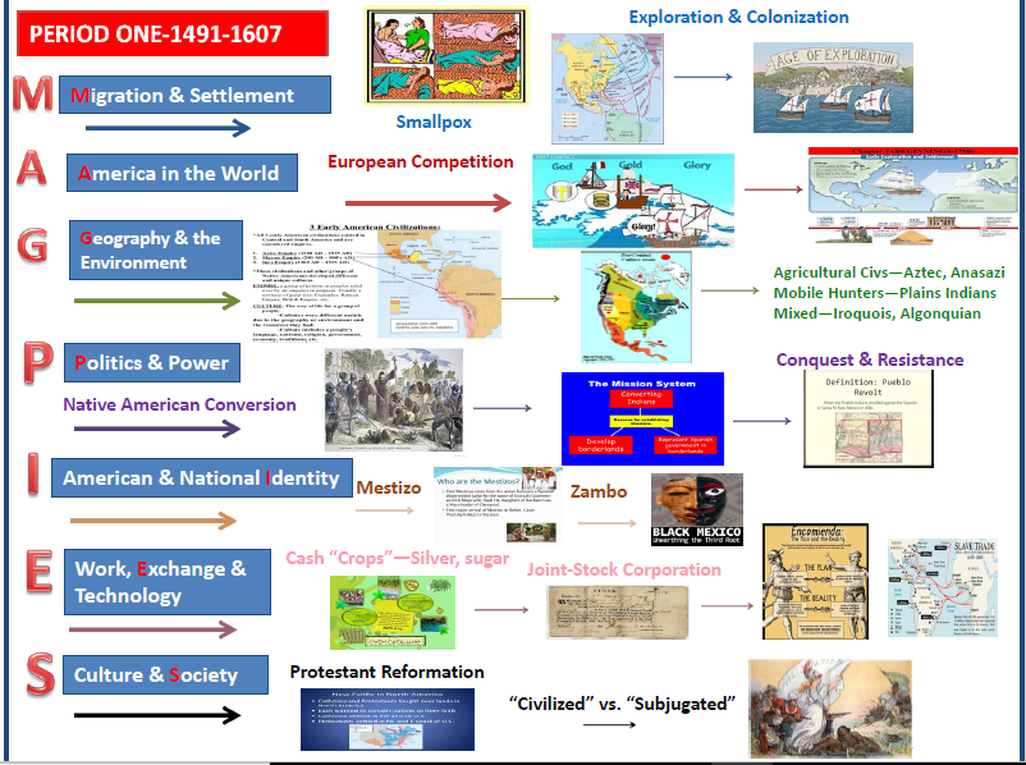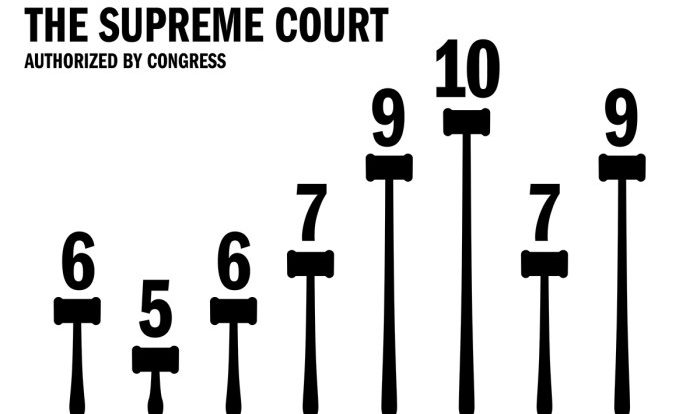Apush period 6 notes pdf – Embark on an enlightening journey through APUSH Period 6 with our comprehensive notes PDF. This invaluable resource encapsulates the pivotal events, themes, and figures that shaped the United States from the mid-19th century to the early 20th century. Prepare to delve into the complexities of political developments, economic transformations, social and cultural changes, foreign policy, and historical interpretations that defined this era.
Our notes provide a clear and concise overview of the major events that characterized APUSH Period 6. We explore the emergence of political parties, the impact of westward expansion, the causes and consequences of the Civil War, and the development of the industrial economy.
Additionally, we examine the demographic shifts, social movements, and changing role of religion during this period.
APUSH Period 6 Overview

APUSH Period 6, spanning from 1877 to 1912, is characterized by the rise of industrialization, urbanization, and immigration, transforming American society and setting the stage for the 20th century.
Key themes of this period include economic growth, technological advancements, social reform movements, and the expansion of American power and influence.
Major Events
- Industrial Revolution and urbanization
- Rise of big business and corporations
- Expansion of railroads and communication systems
- Immigration from Europe and Asia
- Social reform movements, including the Progressive Era
- Spanish-American War and the acquisition of overseas territories
Key Individuals
- Andrew Carnegie: Steel magnate and philanthropist
- John D. Rockefeller: Oil tycoon and founder of Standard Oil
- Thomas Edison: Inventor of the light bulb and other electrical devices
- Jane Addams: Social reformer and founder of Hull House
- Theodore Roosevelt: Progressive President known for his “Square Deal” policies
- Woodrow Wilson: Progressive President who led the US into World War I
Political Developments
The United States witnessed a profound transformation in its political landscape during Period 6. The emergence of political parties and the westward expansion significantly shaped political conflicts and alliances.
Emergence and Evolution of Political Parties
The early 19th century marked the rise of political parties in the United States. The Federalist Party, led by Alexander Hamilton, advocated for a strong central government and close ties with Britain. The Democratic-Republican Party, led by Thomas Jefferson, supported a limited federal government, agrarian values, and a more isolationist foreign policy.Over
time, the Federalist Party declined, while the Democratic-Republican Party evolved into two distinct parties: the Democrats and the Whigs. The Democrats, led by Andrew Jackson, appealed to the common man and championed states’ rights. The Whigs, led by Henry Clay, supported a national bank, protective tariffs, and internal improvements.
Impact of Westward Expansion on Political Conflicts and Alliances, Apush period 6 notes pdf
The westward expansion had a profound impact on political dynamics. The acquisition of new territories and the growth of the frontier led to conflicts over land, resources, and slavery. The Missouri Compromise of 1820 attempted to balance the interests of slave and free states, but it only temporarily resolved the issue.The
annexation of Texas in 1845 and the Mexican-American War of 1846-1848 further intensified sectional tensions. The debate over the expansion of slavery into the newly acquired territories became a major dividing line between the North and the South.
Causes and Consequences of the Civil War
The decades of political conflict and sectionalism culminated in the American Civil War (1861-1865). The immediate cause of the war was the secession of eleven Southern states after the election of Abraham Lincoln, a Republican who opposed the expansion of slavery.The
Civil War was a devastating conflict that resulted in the deaths of hundreds of thousands of Americans. It also led to the abolition of slavery, the strengthening of the federal government, and the reunification of the nation. However, the legacy of the war continued to shape American politics and society for decades to come.
Economic Transformations

The industrial economy’s development significantly impacted society, transforming production methods, employment patterns, and living conditions. Technological advancements played a crucial role in driving economic growth, introducing new industries, and increasing productivity.
While studying APUSH period 6 notes pdf, I came across an intriguing article about Lord of the Flies Naked . The analysis of the novel’s themes and characters in this article provided a unique perspective that enriched my understanding of the historical period covered in the notes.
Returning to the APUSH period 6 notes pdf, I found the information on westward expansion and the Civil War even more captivating after gaining insights from this literary exploration.
Technological Advancements
Inventions such as the cotton gin, steam engine, and interchangeable parts revolutionized manufacturing. These advancements accelerated production, lowered costs, and increased output, leading to rapid economic expansion.
Rise of Labor Unions
The growth of industrial cities brought together large numbers of workers, leading to the emergence of labor unions. Unions fought for better wages, working conditions, and employee rights, influencing the economy by increasing labor costs and pressuring businesses to improve labor practices.
Social and Cultural Changes
The mid-19th century witnessed profound social and cultural transformations in the United States. These changes were shaped by demographic shifts, immigration patterns, and the rise of new social movements. They also had a significant impact on the role of religion and its influence on society.
Demographic Shifts and Immigration Patterns
During this period, the United States experienced a surge in immigration from Europe, particularly from Ireland and Germany. These immigrants brought with them their own cultures and traditions, which contributed to the nation’s growing diversity. At the same time, the population of the United States grew rapidly, due in part to high birth rates and the expansion of the frontier.
Emergence of New Social Movements
The mid-19th century saw the emergence of several important social movements, including abolitionism and women’s suffrage. Abolitionists fought to end slavery, while women’s suffrage activists campaigned for the right of women to vote. These movements were fueled by a growing sense of social justice and a belief in the equality of all Americans.
Changing Role of Religion
Religion continued to play a significant role in American society during this period. However, the rise of new denominations and the growing influence of secularism led to a decline in the power of established churches. This decline was also fueled by the increasing diversity of the American population and the rise of new social movements that challenged traditional religious beliefs.
Foreign Policy and Expansion: Apush Period 6 Notes Pdf
In the late 19th century, the United States embarked on a period of rapid expansion, driven by a combination of economic, political, and ideological factors. This expansionism had profound consequences for both the United States and the world.
Motivations for Expansionism
*
-*Economic Factors
The United States was experiencing a period of rapid industrial growth, which created a need for new markets and resources. Expansionism provided access to new markets for American goods and new sources of raw materials for American industry.
-
-*Political Factors
The United States was becoming increasingly powerful, both economically and militarily. This power gave the United States the ability to project its influence abroad and to acquire new territories.
-*Ideological Factors
Many Americans believed that the United States had a manifest destiny to expand across the North American continent and beyond. This belief was rooted in the idea that the United States was a superior nation with a duty to spread its values and institutions to the rest of the world.
Consequences of Expansionism
*
-*Territorial Expansion
The United States acquired vast new territories during this period, including Alaska, Hawaii, Puerto Rico, and the Philippines. This expansion made the United States a global power and gave it control over a wide range of resources and markets.
-
-*Increased International Tensions
The United States’ expansionism led to increased tensions with other countries, particularly Spain and Great Britain. These tensions eventually culminated in the Spanish-American War.
-*Social and Cultural Changes
Expansionism had a significant impact on American society and culture. The acquisition of new territories brought new people and cultures into the United States, which led to increased diversity and social change.
The Spanish-American War
The Spanish-American War was a short but decisive conflict that took place in 1898. The war was fought between the United States and Spain over the issue of Cuba, which was a Spanish colony. The United States won the war and gained control of Cuba, Puerto Rico, and the Philippines.The
Spanish-American War had a profound impact on U.S. foreign policy. The war marked the end of the United States’ isolationist policy and the beginning of its emergence as a global power. The war also led to the United States acquiring new territories and becoming involved in the affairs of other countries.
The Rise of the United States as a Global Power
After the Spanish-American War, the United States became a major player in world affairs. The United States participated in the First World War and played a key role in the Allied victory. After the war, the United States became a permanent member of the League of Nations and took on a leading role in international diplomacy.The
United States’ rise to global power was due to a number of factors, including its economic strength, military might, and diplomatic skill. The United States also benefited from the fact that it was relatively isolated from the major conflicts that plagued Europe and Asia during the early 20th century.
Historical Interpretations
Historiographical perspectives on APUSH Period 6 reflect the complex social and political contexts of the era. Scholars have debated key events and figures, offering diverse interpretations that shape our understanding of this transformative period.
Progressive Era
Progressive Era interpretations emphasized the rise of social reform and political activism. Historians like Richard Hofstadter and Robert Wiebe portrayed the era as a time of great optimism and social progress, with reformers fighting for labor rights, women’s suffrage, and other progressive causes.
Consensus History
During the Cold War era, a “consensus history” emerged, portraying the Progressive Era as a period of stability and consensus. Historians like Samuel P. Hays argued that the era’s reforms were largely conservative and aimed at preserving the status quo rather than challenging it.
Revisionist Interpretations
In the 1960s and 1970s, revisionist historians challenged the consensus view. They emphasized the era’s social tensions, economic inequalities, and the failure of many reforms to address systemic issues. Historians like Gabriel Kolko and Howard Zinn argued that the Progressive Era was a time of corporate dominance and class conflict.
New Perspectives
Recent scholarship has introduced new perspectives on the Progressive Era, focusing on the experiences of marginalized groups and the role of race, gender, and class in shaping the era’s politics and society.
FAQ Summary
What is the chronological scope of APUSH Period 6?
APUSH Period 6 covers the period from the mid-19th century to the early 20th century, approximately 1844 to 1912.
What are the key themes of APUSH Period 6?
Key themes include political development, economic transformation, social and cultural change, foreign policy, and historical interpretations.
Who are some of the key individuals during APUSH Period 6?
Key individuals include Abraham Lincoln, Ulysses S. Grant, Frederick Douglass, Susan B. Anthony, and Andrew Carnegie.

